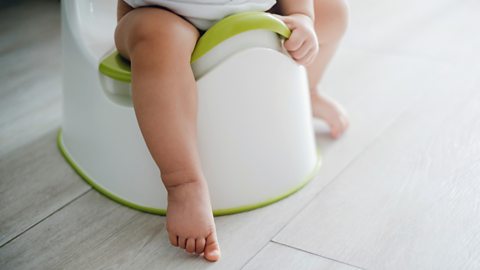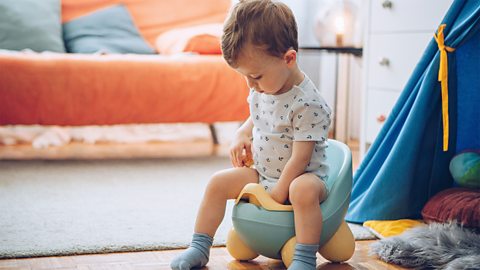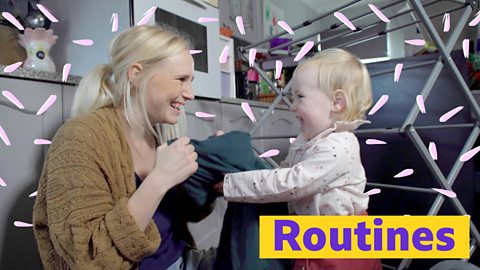Almost all children can learn to be clean and dry. Children with an additional need or a disability may take a little longer and need more support, but the process is essentially the same.
It may feel daunting, but itâs important not to put off potty training for too long.
The longer a child wears a nappy, the harder it may be to introduce a new place for them to wee and poo. It can help to break it down into stages and tailor your approach to their abilities.
We talked to , to learn how to help children with special needs and sensory issues during potty training.
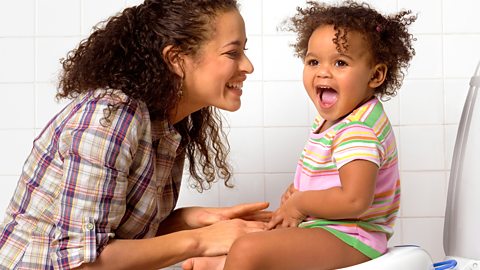
Where to start potty training children with additional needs
Non-verbal and neurodivergent children canât always communicate their thoughts and feelings. This means you canât rely on their signals to tell you when theyâre ready to potty train.
All children learn at a different pace, so it is important to give them plenty of time to develop potty training skills. The best way to teach potty skills is to start in infancy and gradually work towards independence from nappies, building skills as they go along.
Think of this as the potty training preparation stage.
You can start early by changing your child's nappy in the bathroom. By doing this, your child begins to relate toileting activities to the bathroom. You can also try sitting your child on the potty or toilet once or twice a day. This can be done even if they need support to sit.
Once your child can stand, do nappy or pull-up changes standing up and involve them in cleaning up and flushing poo down the toilet. This will teach your child where wee and poo goes.
All of these steps are a great way to introduce the potty or the toilet into your childâs routine early, which will help when they get older and start to have more awareness.
You may need to take more responsibility for knowing how often your child goes for a wee or poo and use this to help direct them. may help with this.
Once you know when your child is emptying their bladder, you can take them to the potty or toilet at set times according to what the chart tells you.

Using visual aids for potty training
Using stories, visual charts, props and games to teach your child what to do and how to do it can be really useful in developing their understanding.
Think of this as the potty training practice stage.
If your child is struggling with their language, you could use a picture of a toilet, or your sign for it alongside the word to help your child understand. Show them the picture or the sign and say â[your childâs name], toiletâ, then take them into the toilet to begin your routine.
Once youâre in the toilet, you follow a visual sequence for undressing and sitting on the toilet.A standard routine could be:
- Undress
- Underwear down
- Sit
- Do wee/poo
- Wipe
- Pull up underwear
- Pull up trousers/dress
- Flush toilet
- Wash hands
You can make your own learning aid by using photographs, pictures, or words to list out a step-by-step toileting routine. You can use whatever medium would work best for your child.
You might also want to make a separate list for them to follow when they are washing their hands.

7 top tips for potty training children with additional needs
1. Your child may take longer to learn, so consider your expectations and donât rush the learning. The more consistent you are with your words and actions, the easier it will be for your child to learn.
2. Children with additional needs are more likely to suffer with constipation. If you think your child is constipated, get this treatedbefore you start practising potty training.
3. Itâs important that your child feels relaxed, comfortable and secure about using the toilet or potty. Make sure the space is accessible to your child.
4. If you start potty training on the toilet, use a footstool to help your child feel confident and safe. This will also help your child get into the best position for doing wees and poos, with their feet supported and knees above their hips.
5. Help your child learn the physical skills needed by breaking them down into smaller steps and allowing your child to do the last step independently. For example, help them push their trousers down most of the way, then have them push the last bit down themselves.
6. Encourage independence as soon as you see it developing, phasing out support once your child shows understanding.
7. Give your child plenty of positive encouragement and praise for the efforts they are making, not just the end result. This can help to keep them motivated and willing to move to the next step.
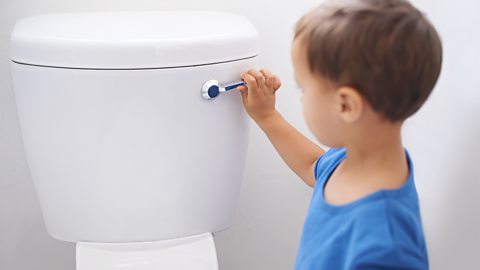
Potty training children with autism
If your child is autistic, developing a toilet routine can take longer, and involve its own particular challenges.
Many children on the autism spectrum find a sudden change in routine or habit difficult. Therefore, the more you can do before you stop using nappies, the better, as this will make this transition as gentle as possible for them.
Here are some things you can try:
- Your child may behave differently than normal whenâŻtheir routine is changed,âŻso let everyone who cares for them know why there could be a change in behaviour.
- It is often easier not to use a potty as part of toilet training to avoid aâŻpossiblyâŻdifficult change from potty to toilet.
- EnsureâŻeveryone working with your child starts toilet training at the same time and follows your agreed approach.
- Observe your child over a few days to see when they do a wee or a poo.âŻIdentifying a regular pattern can help youâŻtake your child to the toilet with an increased likelihood of them doing a wee or poo.
- Teach toileting as a whole routine, from communicating the need to go to the toilet, using the toilet, to drying hands, rather than just sitting on the toilet. Keep this routine the same every time.
- Think about your childâs sensory needs and make changes to reduce their anxiety.âŻDoes the soap smell too strong for them? Does the noise of the extractor fan bother them?
Autistic children may also be more likely to suffer from constipation, which can cause problems in potty training.
Get more information about .

Becoming dry at night for children with additional needs
- Make sure your child drinks plenty during the daytime. Spread the drinks throughout the day.
- Drinks like water or weak squash are best. Avoid fizzy drinks and drinks with caffeine as these can irritate the lining of the bladder. If the bladder lining is irritated this can make the bladder twitchy.
- Work on a good bedtime drinking routine. Try to stop drinks one hour before bedtime, every night.
- Help your child get into the habit of using the potty or toilet at bedtime.Make this time very relaxed, with a story, reading a book or playing a quiet game. The focus is on getting your child to relax, not on whether or not they do a wee.
- Prepare your child for sleep. Unwind with a book or listen to music with the lights turned low. No screens â so no TV, tablet or computer games in the hour before sleep, otherwise your childâs brain will get the wrong message!
- Avoid lifting â in other words waking your child to take them to the toilet â if you want to work on stopping bedwetting. It might keep the bed dry, but it encourages your child to wee during sleep as they donât really wake up.
- Reward your child each step along the way e.g. for getting their drinking right, doing a bedtime wee, using the toilet at night. Donât use rewards or star charts to celebrate dry nights. Children cannot control if they wet the bed, and so rewards for waking up in a dry bed can be demotivating.
- If bedwetting continues beyond the age of 5, speak to a GP or nurse and they can assess the reason for the bedwetting and advise on treatment.
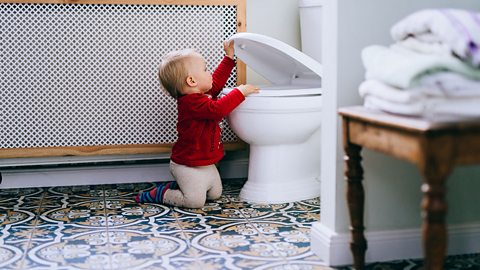
What to do if youâre struggling with potty training
Try to stay calm and do not put pressure on yourself or your child. Potty training is a process, not a one - off event. Donât set hard deadlines which might be unachievable, for example, stopping using nappies by a fixed date in the calendar.
It's fine to only do what feels manageable for you both. It's all part of the learning process.
If it feels like you are having more accidents and stress rather than making progress, then take a break. There may be times when it is more difficult for you to help your child use a potty or the toilet, for example if they are unwell or if they refuse to cooperate.
Make sure itâs a good time for you as well as your child. Itâs best to avoid doing it at a time when there are any big changes to your childâs or familyâs routine, such as moving house, starting at a new education or care setting, or the birth of a new baby.
But you donât need to abandon potty or toilet practice altogether. Pause from focusing on removing the nappies until your child is feeling better or motivated. Continue to practise routines and reinforce the skills your child may have already learned such as sitting on the potty or toilet, undressing themselves and washing their hands.
Go back to first principles and use again to see how often they are doing their wees and poos.
Keep on giving your child encouragement and praise for the effort they are making, not just the result.

